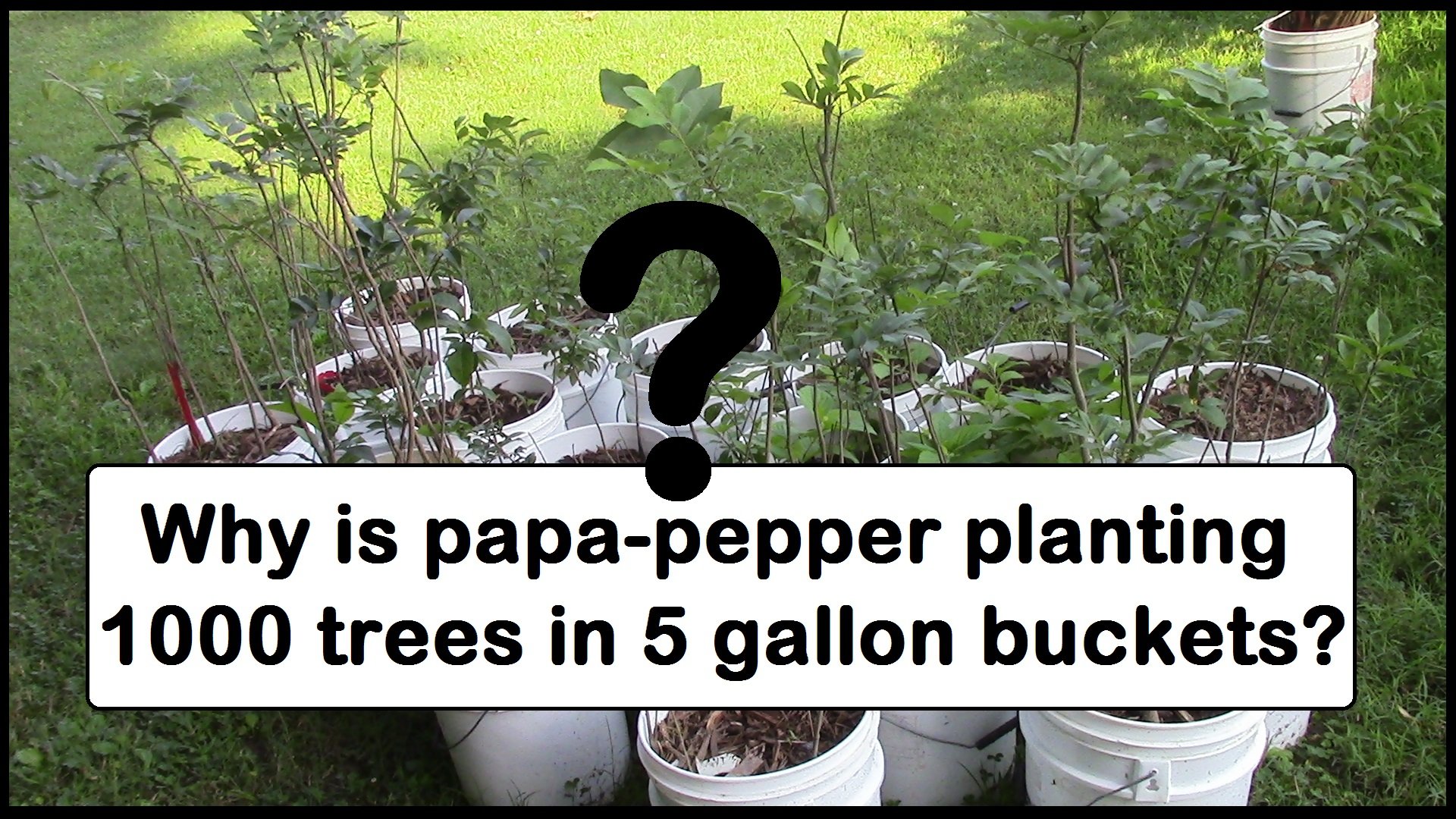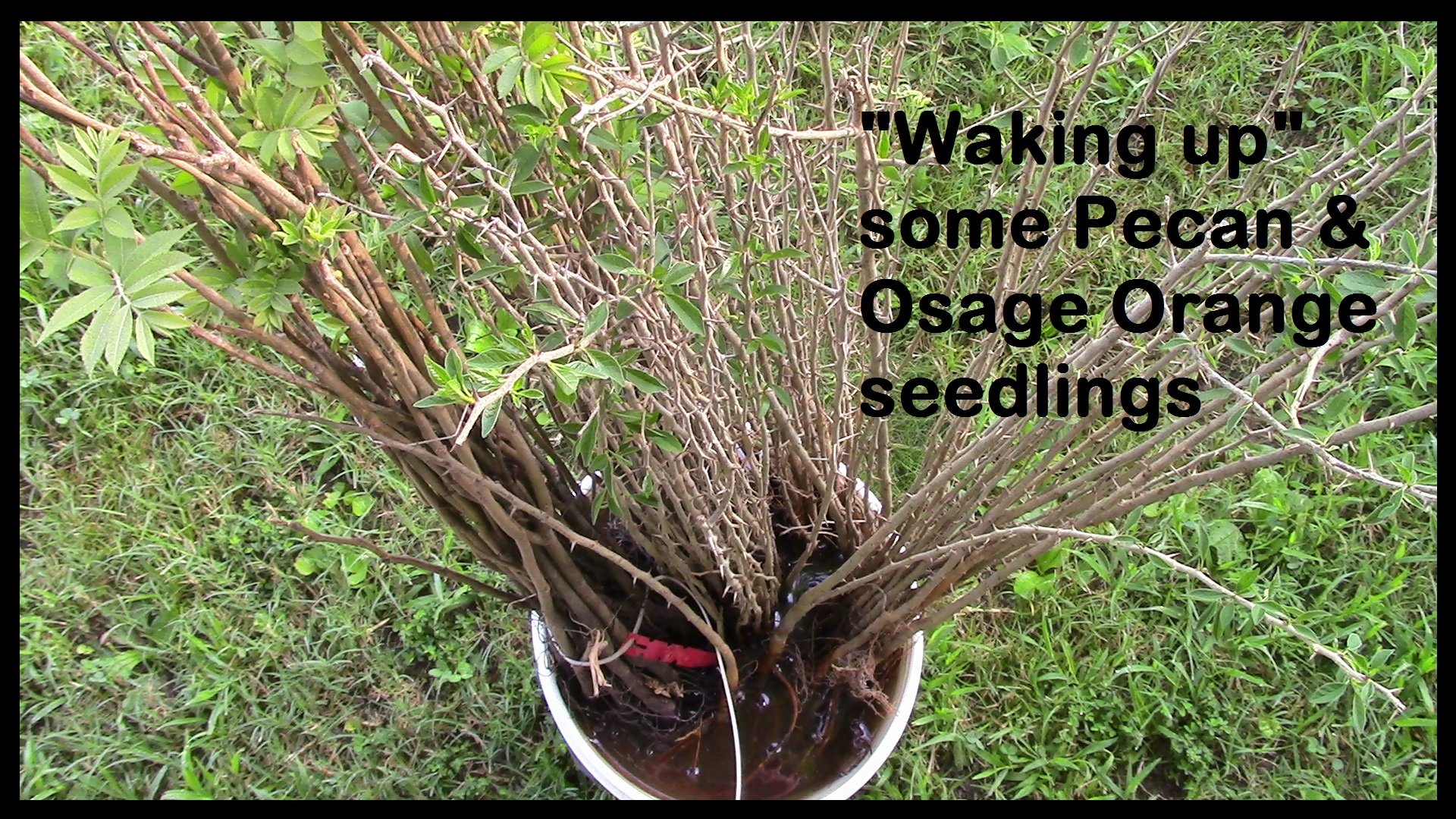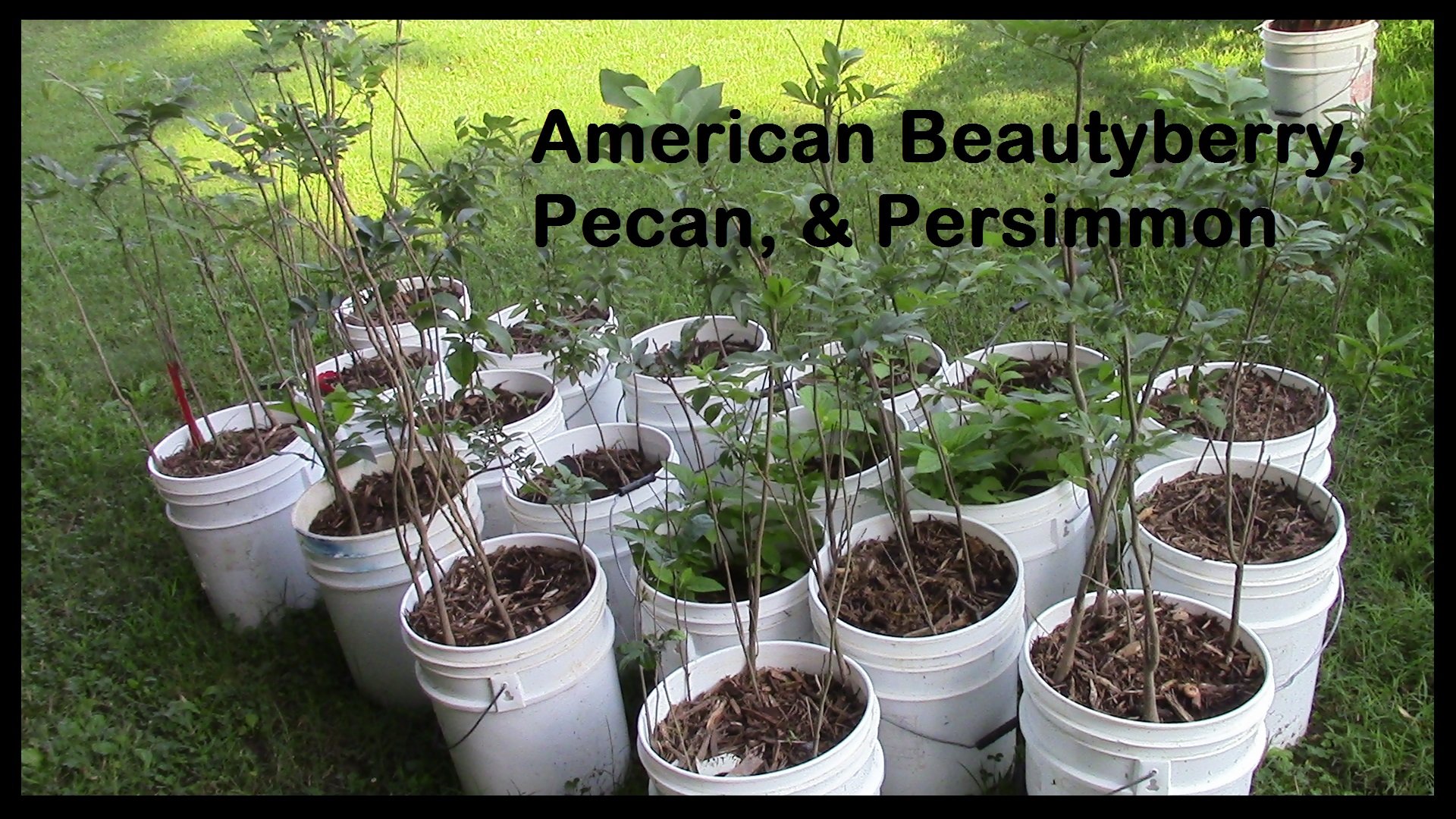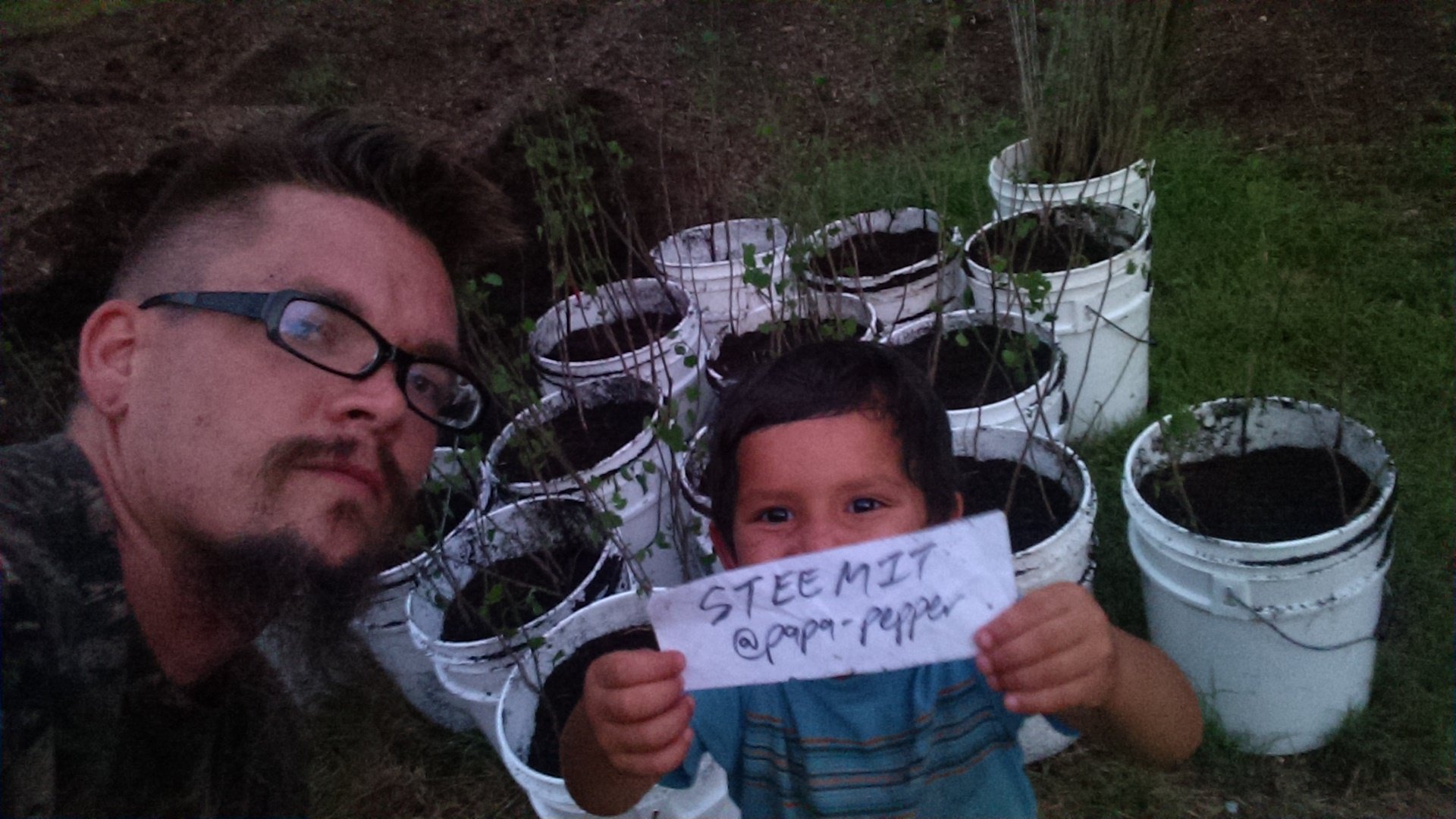
If you guessed, “Because he’s crazy,” you’re only half right, ‘cause I’m only half as crazy as I used to be. Actually, it part of being a wise steward of the dirt, and the beginning of a permaculture food forest adventure.
Dirt Stewardship?
When I use phrases like “being a steward of the dirt”, I mean that I take things entrusted into my care seriously. If I purchase a property, then that’s the dirt that I’m a steward of. Effectively, I’m responsible for what that dirt does, or doesn’t do. I combined this understanding with my current needs, and formulated a “battle plan”.
Food Forest?
A food forest is usually an area that looks like a forest. However, generally every plant growing within it is either edible or there to help an edible plant grow. A forest can be so beneficial anyways, but a food forest is way more delicious. Many people around the world have been planting and crafting these for centuries, and a lot of newcomers are getting involved.
Permaculture?
Permaculture is designing a piece of land agriculturally so that it basically takes care of itself. If a plot of land can be planted with a variety of edible plants that are self-sufficient themselves, that plot of land has just increased astronomically in value, though it may just look like some shrubs and trees to a stranger. Plants generally want to thrive on their own. Permaculture involves utilizing the landscape and natural characteristics of the plant to create the best possible growing scenario for the plants as a group.
Why 1000?
A thousand is just how many I happen to have. I did some exploration online ahead of time and my total, pre-tax investment was $320. Yeah, 32 cents each. Sweet. Some will be for planting, some with be for selling, and others will be for trading or bartering later on. Since their “final resting place” has not yet been determined, the five gallon buckets will buy me some time.
Here’s what I got and why.
- 100 Redbud – A smaller tree that produces beautiful pink flowers in the spring. The flowers are both edible and delicious, and the Native Americans ate the seeds after roasting them. Since the seed pod is a legume, it has a symbiotic relationship with bacteria by the name of rhizobia within their root systems that produce nitrogen. This nitrogen can act as a fertilizer for the plants around it, especially when the tree dies.
- 200 Wild Plum – While wild plum produce an edible fruit themselves, they can be an important source of rootstock for grafting purposes as well. I’ll be covering some grafting techniques in papa-peppers guide to plant propagation. Since wild plums are stone fruits, which are members of the Prunus genus, they can be used as a rootstock for any other stone fruit. This includes peaches, nectarines, apricots, cherries and other varieties of plums. That means that if I find an old cherry tree with great fruit on it, I could get some cuttings (or scions), and make a whole orchard full just by grafting. I’ll also be attempting to grow multiple kinds of fruit on one tree, so the wild plums will come in handy for that too.
- 100 Pecan – The Pecans will be used mostly for their nuts and for selling or trading. I really didn’t need 100, but for 32 cents each… Since pecan trees have leaves that contain Juglone, they are allelopathic, and can be toxic to other plants, much like a black walnut tree. The ones that I do plant will be distanced from other plants that they might negatively affect.
- 100 Serviceberry – Serviceberry is also known as Shadbrush, Juneberry, or Amelanchier and produces an edible berry. The nutritious berries taste similar to blueberries and are a good source of certain vitamins and minerals. These will be primarily planted as a food source, since the berries can be eaten raw, or dehydrated or frozen to preserve them.
- 200 Osage Orange – Also known as a Monkey Ball, Horse Apple, or Hedge Apple, the uses of the Osage Orange tree are many. Though the fruit is inedible, they do contain multiple compounds that can act as repellents for creatures like spiders. As a wood, it is extremely dense and rot resistant. One of the more common traditional uses for it was a living fence. The thorns on an Osage orange branch can remind one of barbed wire. They used to be planted close together and with the tops bent back into the soil. The branches that grew up would then be woven and twisted together until a fence was made that was “bull strong, hog tight, and horse high”. One newer use for the Osage orange that is gaining popularity is using it as a root stock for the Chinese Mulberry, also known as a Che tree. I’ve got two growing in pots right now. I’ll probably combine the old and new uses to make an edible, living fence. We plan on using a traditional metal fencing and planting the Osage orange some feet away. Once the Osage orange has been trained into a sufficient fence, we can move the metal one and use it elsewhere.
- 100 Witch Hazel – The Witch Hazel shrub is where the bottled anti-inflammatory astringent originally comes from. A healing tea can also be made from it, and I like my tea. It’ll be a beneficial and attractive plant to have growing on the property, but selling some might be lucrative as well. Remember, my overhead per plant in 32 cents. Once I add in free five gallon buckets and free compost, it’s still 32 cents. Yet, somehow, three year old witch hazel shrubs at the local nursery have a price tag of $89.95. I sense an ability to move into a preexisting market and undercut the competition.
- 100 Persimmon - Persimmons are another food tree. Their scientific genus is Diospyros There are many varieties worldwide and they fall into two main categories; Astringent and Non-astringent. The Astringent varieties need to be exposed to a hard frost before they’ll actually taste pleasant. If you eat one too early, it’s downright nasty and quite disagreeable. Once they are ready though, they taste magnificent. I’d liken them to an orange freezer-pop. Anyway, persimmon is one tree that just won’t propagate using most methods. The only chance you have is grafting. We will be planting many of the ones we got as is, and use some of them as a rootstock for grafting onto. We’re currently growing some Asian varieties of persimmon from seed to graft on our American Persimmons.
- 100 American Beautyberry – This common shrub in the south can be used as an ornamental specimen in the yard or garden. Native Americans used this plant medicinally for a variety of ailments. The leaves contain intermedeol and callicarpenal which both act as insect repellants. Earlier Americans would rub the leaves on themselves or place the crushed leaves on their animals to keep various biting insects away. The berries can be consumed raw once they are ripe, but are not the most delicious. They become tastier once they are added to a jelly or dish where they are mixed in with other ingredients.
I plan on getting some more this fall that I couldn't get last winter, because they were already sold out. On the top of my list? Paw-Paw & Mulberry

Hopefully, this will wind up being a great learning experience that will also bless us with a pile of food for many years to come. I'll keep you posted as our progress continues.


